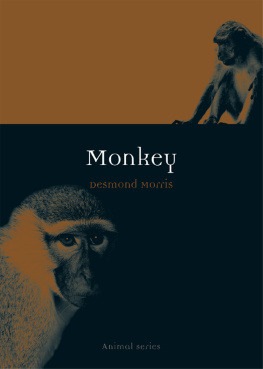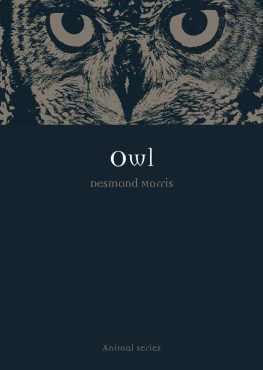C ONTENTS
About the Book
Consisting of his timeless classic Manwatching, completely revised and updated, with much new material gathered since the books original publication, and for the first time incorporating the text of Bodywatching, this new edition is set to become the definitive body language bible. Lavishly illustrated throughout with line drawings and two 16pp colour plate sections, Peoplewatching is a handsomely designed and fitting tribute to one of the most thought-provoking and popular scientists of his day.
About the Author
Desmond morris was born in Wiltshire in 1928. After gaining a degree in zoology from Birmingham University, he obtained his D.Phil, from the University of Oxford. He became curator of mammals at London Zoo in 1959, a post he held for eight years. He was already the author of some fifty scientific papers and seven books before completing The Naked Ape in 1967, which was to sell over 20 million copies throughout the world and be translated into almost every known language. Desmond Morris had made many television programmes and films on human and animal behaviour, his friendly and accessible approach making him popular with both adults and children, and he is now one of the best-known presenters of natural history programmes. He is also an accomplished artist.
ALSO BY DESMOND MORRIS
The Biology of Art
The Mammals: a Guide to the Living Species
Men and Snakes (co-author)
Men and Apes (co-author)
Men and Pandas (co-author)
Zootime
Primate Ethology (editor)
The Naked Ape
The Human Zoo
Patterns of Reproductive Behaviour
Intimate Behaviour
Manwatching: a Field-guide to Human Behaviour
Gestures: Their Origins and Distribution (co-author)
Animal Days (autobiography)
The Soccer Tribe
The Giant Panda (co-author)
Inrock (fiction)
The Book of Ages
The Art of Ancient Cyprus
Bodywatching: a Field-guide to the Human Species
Catwatching
Dogwatching
The Secret Surrealist
Catlore
The Human Nestbuilders
Horsewatching
The Animal Contract
Animalwatching: a Field-guide to Animal Behaviour
Babywatching
Christmas Watching
The World of Animals
The Naked Ape Trilogy
The Human Animal: a Personal View of the Human Species
Bodytalk: a World Guide to Gestures
Catworld: a Feline Encyclopedia
The Human Sexes: a Natural History of Man and Woman
Cool Cats: the 100 Cat Breeds of the World
Body Guards: Protective Amulets and Charms
The Naked Ape and Cosmetic Behaviour (co-author) (in Japanese)
The Naked Eye (autobiography)
Dogs: a Dictionary of Dog Breeds
Peoplewatching
Desmond Morris

P ICTURE C REDITS
1 Bubbles/Katie van Dyck; 2 Robertharding.com/Sylvain Grandadam; 3 Rex Features/Erik Pendzica; 4 Robertharding.com; 57 Desmond Morris; 8 Travel Ink/Kevin Nicol; 9 ImageState/AGE Fotostock; 10 Paul Doyle; 11 Rapho/Laurence Kourcia; 12 Moviestore Collection; 13 Rex Features/Munawar Hosain; 14 Moviestore Collection; 15 Hutchison Picture Library/Philip Wolmuth; 16 Impact/Michael Mirecki; 17 Paul Doyle; 18 Hutchison Picture Library/Kerstin Rodgers; 19 Sportsphoto/David Gadd; 20 Desmond Morris; 21 Network/JB Pictures/J Sartore; 22 Retna/Jenny Acheson; 2324 Desmond Morris; 25 Impact/Yann Arthus Bertrand with Fuji Film; 26 Frank Lane Picture Agency/P Cauli/Pando Photos; 27 Impact/Simon Shepheard; 28 Rex Features/Michael Friedel; 29 Robertharding.com/Sylvain Grandadam; 30 Rapho/Daniel Riffet; 31 Retna/Kampfner.com; 32 Robertharding.com; 33 Rex Features; 34 Sportsphoto/Mark Lilly; 35 Express Syndication/Jonathan Buckmaster; 36 Sportsphoto/Richard Sellers; 37 Sportsphoto/David Gadd; 38 Desmond Morris; 39 Colorsport; 40 Hutchison Picture Library/Carlos Freire; 41 Frank Spooner Pictures/Bruno Madjih; 42Travel Ink/Cohn Marshall; 43 Robertharding.com/Michael Busselle; 44 Rex Features/Ray Tang; 45 Frank Spooner Pictures/Gamma/Franois Lochon; 46 Colorsport/Andrew Cowie; 47 Rex Features/Nils Jorgensen; 48 Anthony Moore; 49 Rex Features/Nils Jorgensen; 50 Moviestore Collection; 51 Impact/Steve Parry; 52 Colorsport; 53 Impact/Mark Cator; 54 NHPA/Martin Harvey; 55 NHPA/George Bernard; 56 Rex Features/Mark Campbell; 57 Magnum Photos/Ferdinando Scianna; 58 Food Features; 59 Robertharding.com; 60 Desmond Morris; 61 Katz Pictures/Valerie Macon/Rea.
I NTRODUCTION
Just as a birdwatcher watches birds, so a peoplewatcher watches people. But he is a student of human behaviour, not a voyeur. To him, the way an elderly gentleman waves to a friend is quite as exciting as the way a young girl crosses her legs. He is a field observer of human actions, and his field is everywhere at the bus-stop, the supermarket, the airport, the street corner, the dinner party and the football match. Wherever people behave, there the peoplewatcher has something to learn something about his fellow men and, ultimately, about himself.
We are all peoplewatchers to some extent. We occasionally make a mental note of a particular posture or gesture and wonder how it can have originated, but we seldom do anything about it. We say things like: So-and-so makes me uneasy I dont know why, but he just does, or Wasnt she behaving strangely last night? or I always feel completely relaxed with those two its something about their manner. And there we leave the matter. But the serious peoplewatcher wants to know why these feelings are aroused. He wants to know how we come to act the way we do. This means carrying out long hours of fieldwork and looking at people in a new way.
There is nothing especially technical about this approach. All that is needed is an understanding of a number of simple concepts, and it is these concepts that this book aims to present. Each one tells us about a special type of behaviour, or a special way in which behaviour develops, originates or changes. To know these concepts makes it possible to recognize certain patterns of behaviour much more clearly the next time they are encountered, and it enables the observer to see beneath the surface of what is taking place whenever people meet and interact.
So this is a book about actions, about how actions become gestures, and about how gestures transmit messages. As a species we may be technologically clever and philosophically brilliant, but we have not lost our animal property of being physically active; and it is this bodily activity that is the primary concern of the peoplewatcher. Frequently the human animal is unaware of his actions which makes them all the more revealing. He concentrates so hard on his words that he seems to forget that his movements, postures and expressions are telling their own story.
It should be added, though, that this book is not intended as an aid to dominating ones companions by reading their secret thoughts. A birdwatcher does not study birds in order to shoot them down. In the same way, a peoplewatcher does not take unfair advantage of his special understanding of human behaviour. True, a proficient, objective observer can utilize his knowledge to transform a boring social occasion into an exciting field-trip, but his primary aim is to come to a deeper understanding of human interactions and of the remarkable predictability of much of human behaviour.
Next page


















